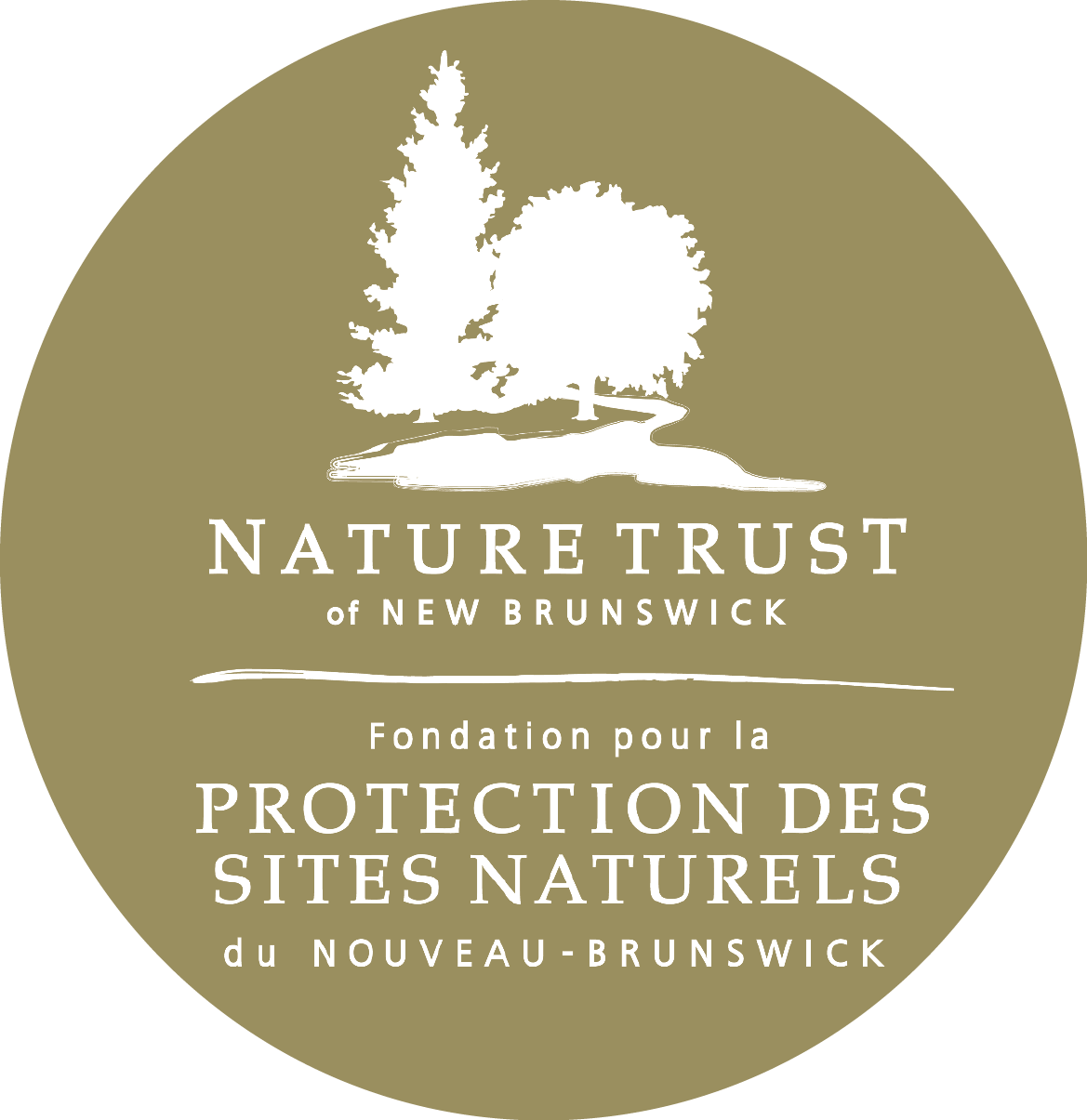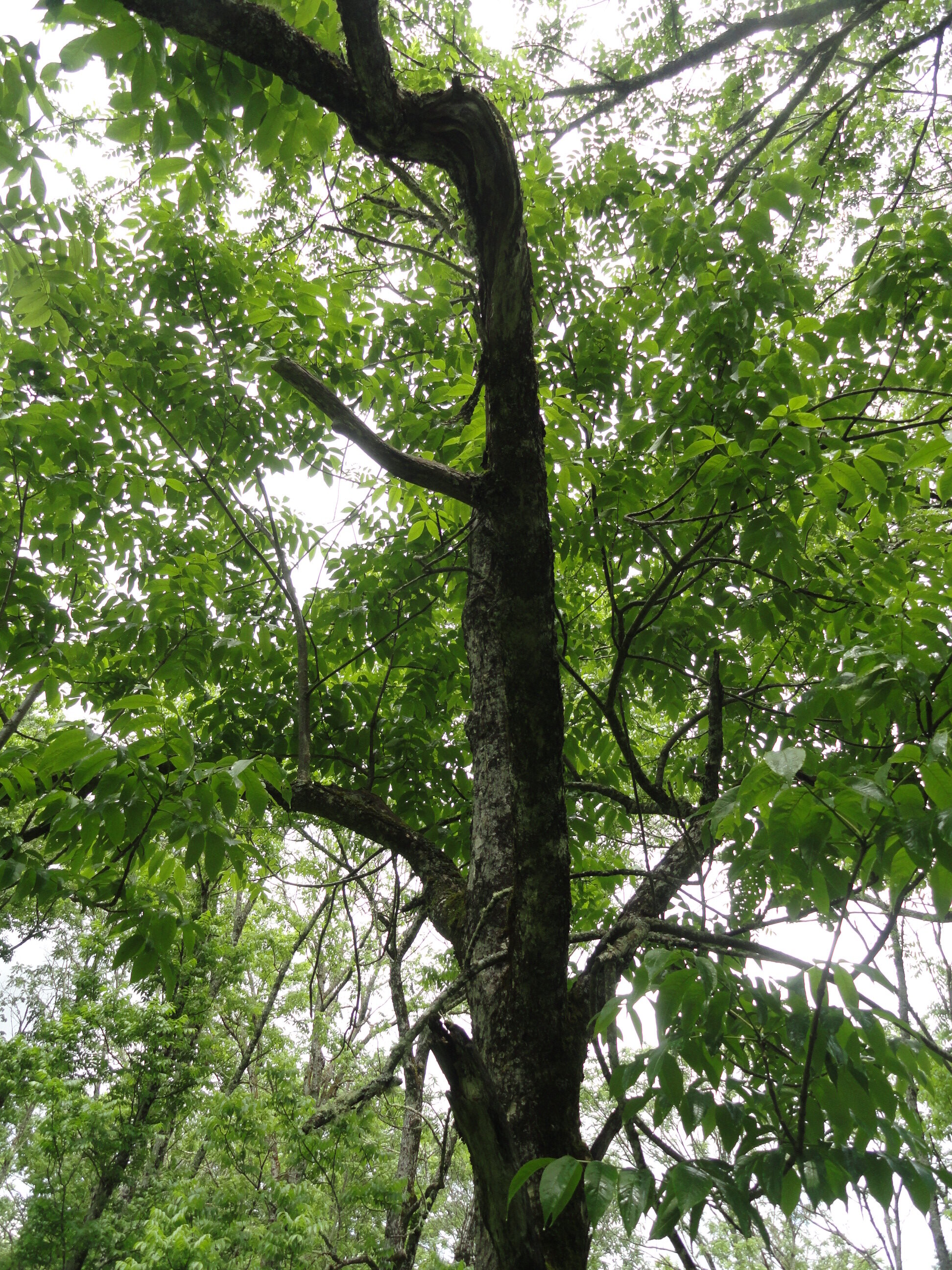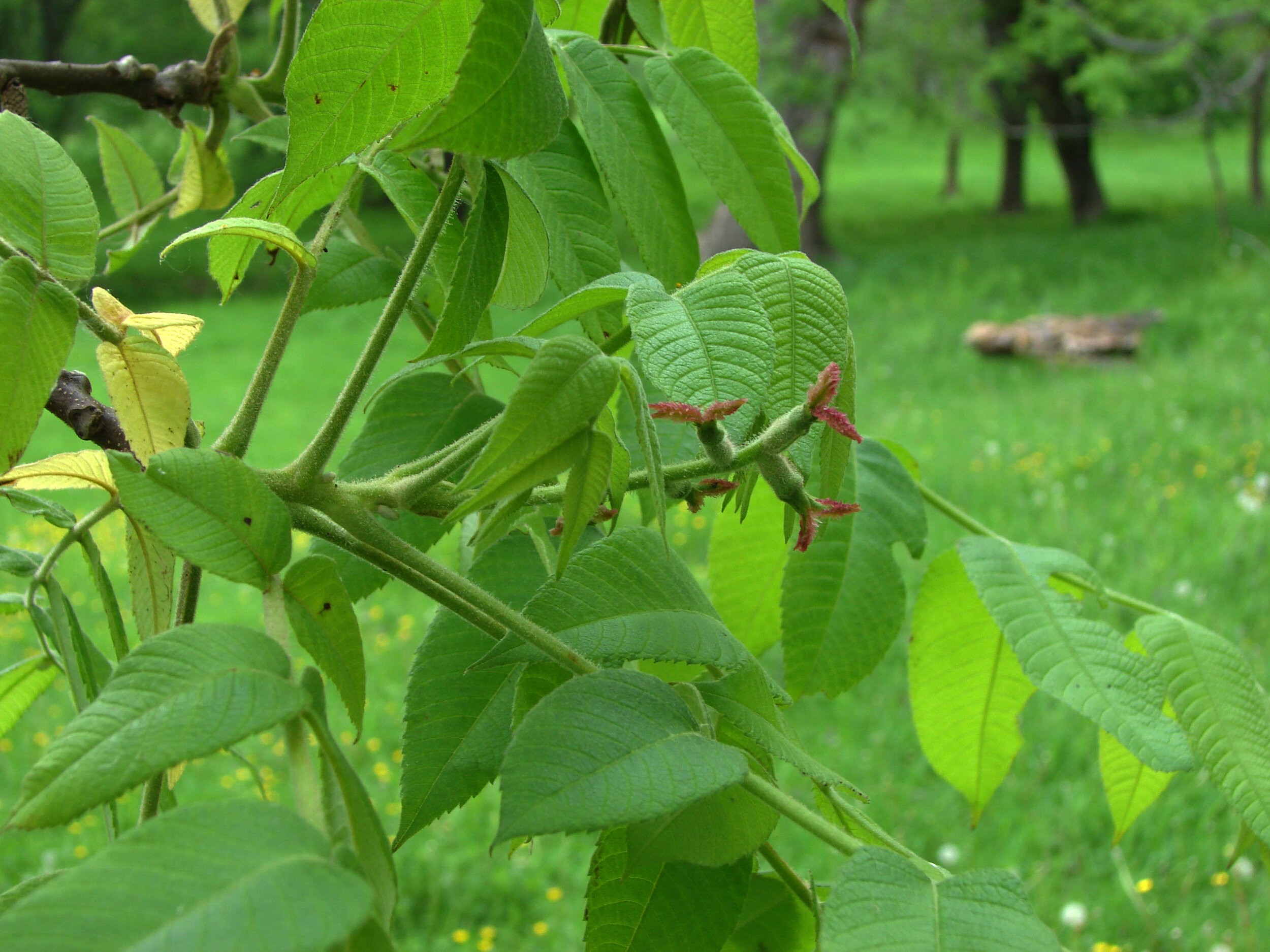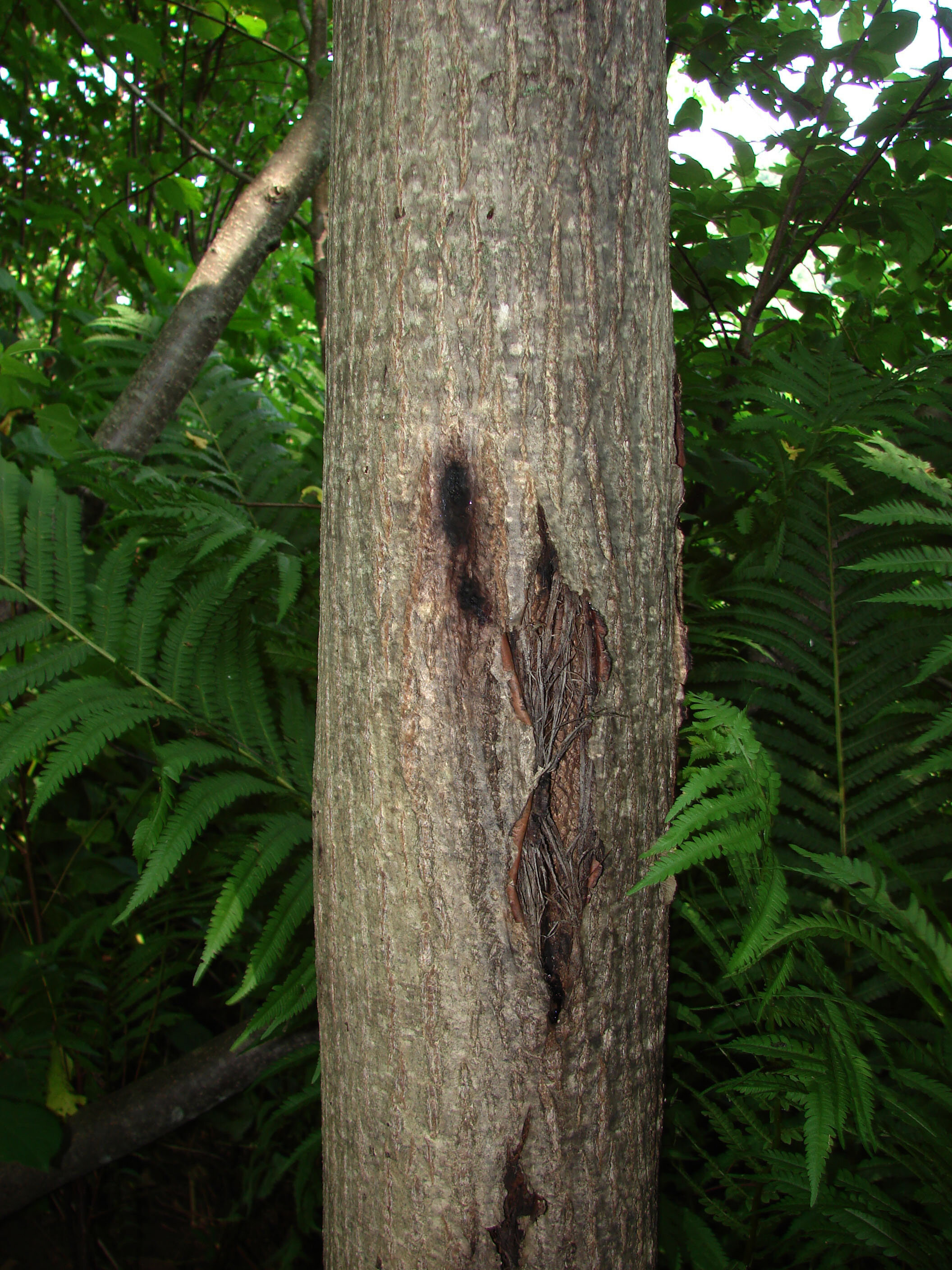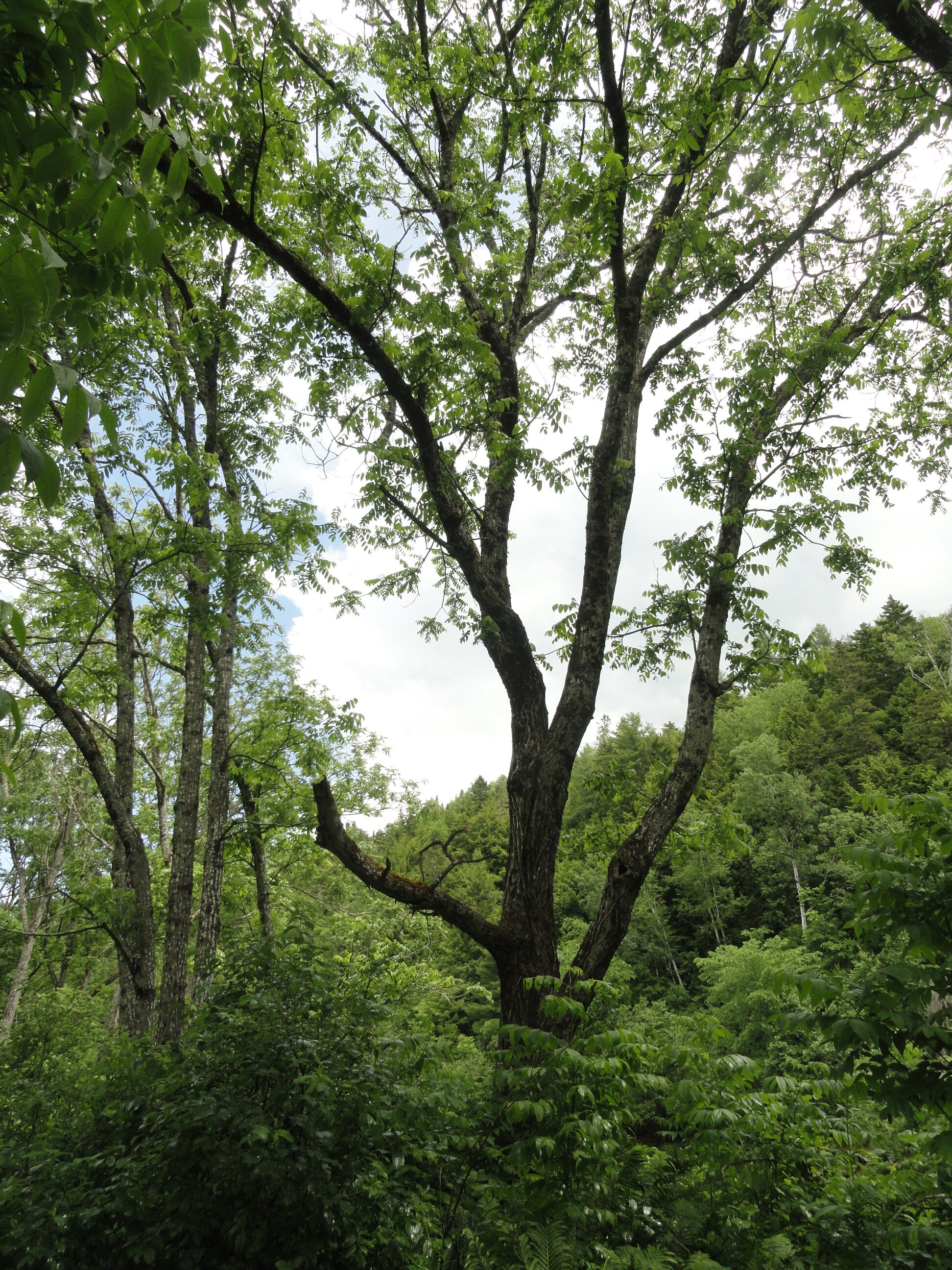(Juglans cinerea)
Status: Endangered
This means that without some form of action, they could disappear from Canada or the entire planet.
Identification guide:
Compound leaves (11-17 leaflets on a central stalk).
Oval, pointed nut, covered with a light green, sticky husk.
Wide, flat ridges on bark of mature trees.
Habitat
The butternut tree (Juglans cinerea) is named for its rich nuts, which are produced in abundance only every two to three years. This species grows well in open areas and is typically found at the edge of floodplains, along streams, and on rich upland sites.
Maliseet communities on the St. John River could not wait to harvest butternuts in the fall for their winter treats. Historically, they also used butternuts to produce yellow–brown dye; butternut oil was used with bear grease as a mosquito repellent; and butternut bark used as a mild remedy for slight burns on the hands (with permission, Archives of Maliseet Nation Conservation Council, 2014).
Threats
Butternut canker disease is causing drastic declines in butternut tree populations. Diseased areas develop cankers under the bark that eventually surround the trunk and kill the tree. New Brunswick is one of the last locations in North America to be affected by the canker, making our butternut among the last intact remnants of the species. Genetic tests indicate that our populations are unique compared with butternut from other parts of its range, adding to their ecological significance. Our current focus for conservation is the long-term storage of seed from trees known to be of New Brunswick origin.
Ways You Can Help
Learn tips to help determine if your butternut is native or planted. It may be native if:
There are many other butternut trees in the area;
It produces many nuts only every 2 – 3 years;
In spring, its leaves appear late compared to other tree species.
This project was undertaken with the financial support of Environment Canada.
To find out more about Species at Risk conservation, contact our Conservation Planning Manager, Carli Le Roux, below
or by calling (506) 457-2398.
